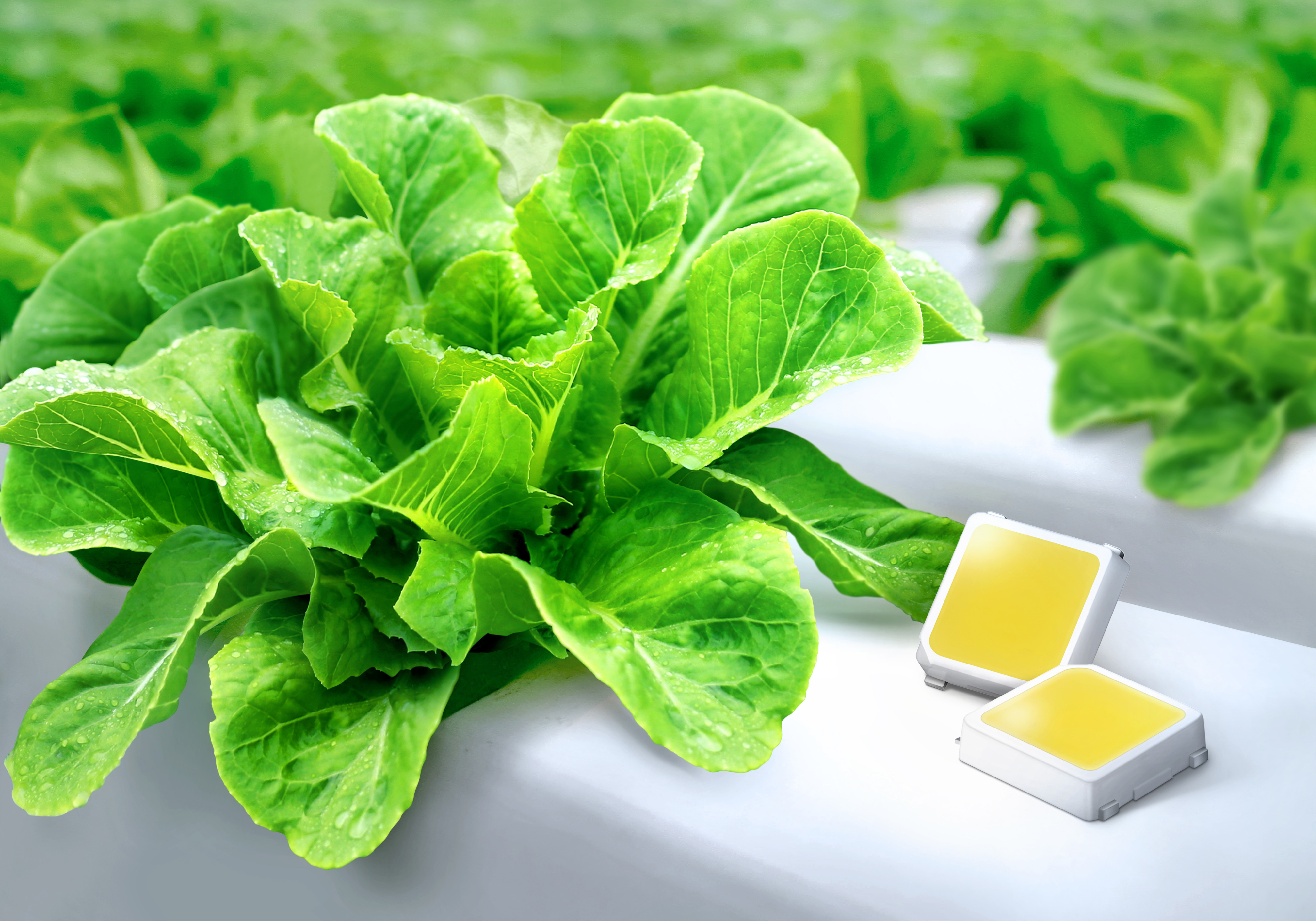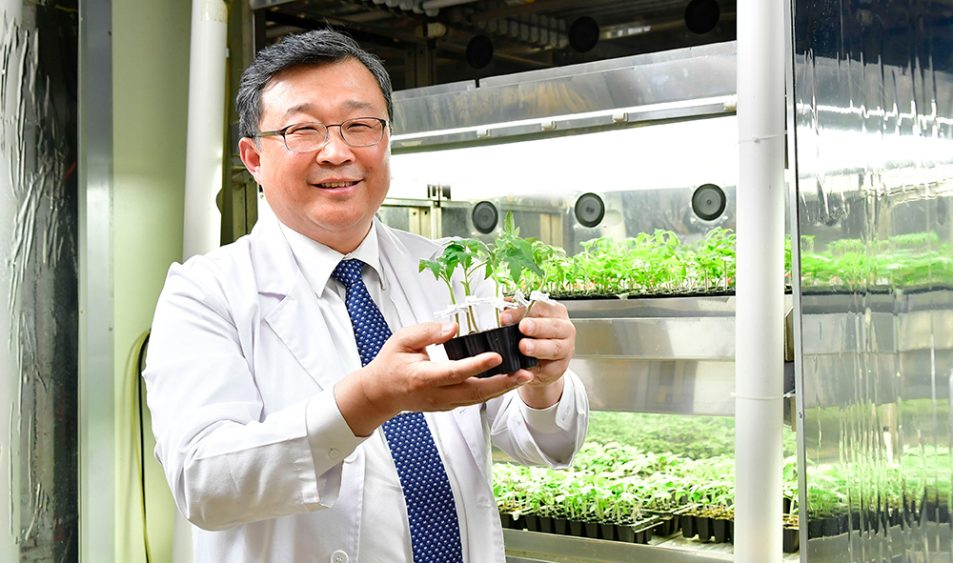The development of agricultural innovation has become more and more urgent than ever given the factors of increasing world population and global warming. As a result, vertical farming, which serves as a feasible solution to mass produce healthy and safe food, is getting increasingly popular across the world.
Samsung Electronics has launched full-spectrum white-based horticulture LEDs to keep up with the trend of agriculture innovation and underline the advantages of applying LEDs for smart farming approaches such as vertical farm.

(Image: Samsung)
Smart farming refers to an intelligent farming system that applies information and communication technologies (ICT) to agriculture. Vertical farming, wherein food is produced in vertically stacked layers, is regarded as a potential future agricultural with several benefits including its economical space and resource usage, environmental-friendly cultivation, and reliable harvesting.
Since Plant photosynthesis, germination and growth all depend on the wavelength of light the plant is exposed to; LED lighting enables optimum lighting conditions for growing any plant with its adjustable wavelength. Different light wavelengths can affect the taste and nutrient content of different types of plants or even the same species, This matching of the right wavelength to the right vegetable is called a ‘lighting recipe’.”
Professor Changhoo Chun, adviser to Samsung’s horticulture LED development and professor at College of Agriculture and Life Sciences, Seoul National University, said that Samsung’s white-based horticulture LEDs which blend RGB colors offered a wide spectrum of wavelengths, making it more effective in indoor framing.

(Professor Changhoo Chun; image: Samsung)
He explained, “Growing plants well comes down to providing the right combination of wavelengths specific to each type of plant – from vegetables to fruits to medicinal plants. However, finding the optimum for each type of produce is often time-consuming and costly – a difficult undertaking for most vertical farms.”
Samsung has worked closely with agriculture research teams to find the optimal combination of light wavelengths necessary for peak plant growth. In order to do this, the most in-demand produce from existing plant factories were documented and then experiments on them were conducted with various combinations of light wavelengths. From the results of these trials came Samsung’s lighting solution lineup, including the full-spectrum white-based horticulture LEDs.





 CN
TW
EN
CN
TW
EN







